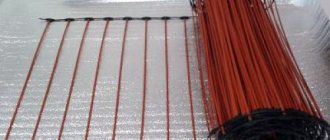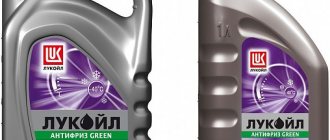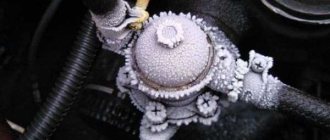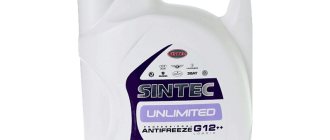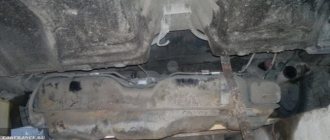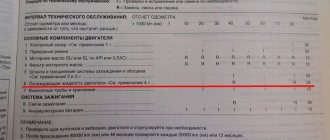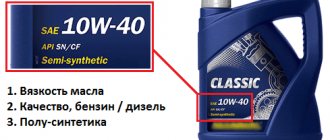A test of automobile coolants (coolants), which once again showed that half of the tested products are low-quality and dangerous antifreeze that can harm the engine
A group of products that showed extremely unsatisfactory results
This situation is further aggravated by the fact that Russia has not yet adopted a technical regulation, which should classify coolants and establish parameters, as well as the composition and applicability of the components used in their production. The only regulatory document regarding antifreeze (that is, low-freezing cooling liquids) remains the old GOST 28084–89, which was adopted back in the days of the Soviet Union. By the way, the provisions of this document apply only to liquids made on the basis of ethylene glycol (MEG). This circumstance actually gives a free hand to unscrupulous manufacturers who, in the pursuit of profit, often use low-quality and often downright dangerous substances. The scheme here is as follows: businessmen develop their own coolant formulation from cheap components and formalize it in the form of certain technical conditions (TS), after which they begin to massively butcher their product.
The presence of methanol in antifreeze is often hidden under the inscription “aliphatic alcohols” (highlighted in a yellow frame)
One of the most common options for “antifreeze” bodyagi is to use, instead of expensive MEG, a substitute mixture consisting of cheap glycerin and equally cheap methanol. Both of these components are extremely harmful to the cooling system. For example, glycerin promotes an increase in corrosion activity, especially in the cooling channels of the cylinder block; it has a high viscosity (which is tens of times higher than that of ethylene glycol) and increased density, which leads to accelerated wear of the pump. By the way, just in order to somehow reduce the viscosity and density of the coolant, companies add another harmful component to it - methanol. Let us remember that this alcohol belongs to the category of dangerous technical poisons. Its use in the production of consumer products is prohibited by law, violation of which threatens with severe administrative penalties. However, this is only one, legal aspect. The use of methyl alcohol in the cooling system is also technically unacceptable, since methanol simply disables its parts and components.
The result of the corrosive effect of methanol and glycerin on the radiator metal
The fact is that an aqueous solution of methyl alcohol at temperatures of 50 ° C and above begins to actively interact with aluminum and aluminum alloys, destroying them. The rate of such interaction is very high and is not comparable with the usual rate of corrosion of metals. Chemists call this process etching, and this term speaks for itself. But this is only part of the problems that “methanol” antifreeze creates. This product has a low boiling point (approximately 64 °C), so methanol gradually evaporates from the cooling circuit. As a result, coolant remains there, the temperature parameters of which do not correspond at all to the required thermal parameters of the engine. In hot summer weather, such liquid quickly boils, creating plugs in the circulation circuit, which inevitably leads to overheating of the engine. In winter, in the cold, it can simply turn into ice and damage the pump. According to experts, individual elements of the cooling system components, for example, water pump impellers, which are also subject to high dynamic loads, are destroyed by methanol-glycerin antifreeze in almost one season. That is why the current test, which was organized jointly with the AvtoVzglyad portal, had as its main goal the identification of substandard products containing methyl alcohol. For testing, we selectively purchased twelve samples of assorted antifreezes and antifreezes, which were purchased at gas stations, metropolitan and Moscow region automobile markets, as well as chain auto stores. All bottles with coolants were then transferred to one of the testing laboratories of the 25th State Research Institute of the Ministry of Defense of the Russian Federation, whose specialists carried out all the necessary studies.
Varieties
It is worth noting that G12 red antifreeze is not the only representative of coolants.
- G11. These are domestic blue antifreezes and antifreezes. Used on cars before 1996.
- G12. Now this is the most common group of antifreezes used by the world's leading automakers. The composition has a more gentle structure and is also distinguished by the presence of carboxylate additives. It can be painted not only red, but also lilac.
- G13. This is currently the most environmentally friendly coolant for internal combustion engines. It has excellent properties and characteristics. However, due to its high cost, it is not used as widely as the previous group. In addition, G13 type fluids are not intended for brass and copper radiators.
Types and differences of Felix antifreeze
Each refrigerant has individual technical capabilities that are used to ensure proper vehicle performance. This explains their varieties:
- Carbox (red);
- Energy (yellow);
- Prolonger (green);
- Expert (blue).
The difference between antifreezes lies not only in the color range, but also in the individual characteristics intended for different types of engines.
Carbox
This Felix brand antifreeze in red packaging is called Carbox (G12). This type of Russian refrigerant has passed benches and laboratory tests in the United States of America. Antifreeze meets domestic and international standards. The refrigerant is made on a carboxylate basis, after which purified demineralized water and special additives are added. Antifreeze is suitable for any type of engine. Liquid resource - 250 thousand km. But it is worth noting that even after this distance, the refrigerant will not lose its inherent properties.
The substance Carbox has the following features:
- Engine protection from cavitation corrosion.
- Long service life.
- There are additives that prevent the occurrence of scale.
- Temperature resistance.
- High heat dissipation.
Energy
Felix Energy antifreeze in yellow packaging is designed for high-power diesel and gasoline engines. Felix is popular because it was used in special equipment, watercraft, and even stationary engines. In addition, it can be poured into a passenger car. Energy is intended for devices manufactured after 2001. A distinctive feature of Energy is its resource, which is 650 thousand km. Energy antifreeze retains its inherent properties for decades. The composition contains some additives that expand the temperature range of antifreeze. The refrigerant will only boil at 1240 degrees Celsius.
Energy benefits:
- Great resource.
- Heat dissipation properties are increased.
- Does not form foam.
- Temperature resistant.
- There are no phosphates or silicates in the composition.
A special fluorescent additive is added that glows under ultraviolet light. It is used to detect leaks.
Prolonger
Felix Prolonger antifreeze is available in green packaging. Prolonger is intended for use in highly loaded power units. It is also used in industrial installations and special devices. Felix antifreeze can be used for motor cars and trucks operating in extreme conditions. The refrigerant is made on a silicate basis, but without carboxylate additives. The resource is 120 thousand km, but it is worth considering that the liquid can get along with aluminum alloys, rubber and silicone.
Distinctive features:
- Reliable protection against overheating and freezing.
- Lubricates units.
- Able to extend the life of the liquid pump, thermostat, radiator.
Expert
Felix antifreeze in blue packaging is universal. It is used for cooling engines and as a coolant in heating systems. The resource, as in the previous version, is not too large and amounts to 120 thousand km. The refrigerant copes with corrosion, even electrochemical and cavitation. Antifreeze contains additives that restore the properties of an already filled substance if a new portion is added to it.
Distinctive features:
- Versatility.
- Rust resistant.
- Restorative properties.
Carbox
Energy
Prolonger
Expert
Compound
Regardless of the type, any coolant has a homogeneous composition and similar technical characteristics. Antifreeze G12 red is no exception.
- Anti-foam. Reduce the risk of foam formation in the expansion tank when circulating fluid in the system.
- Anti-corrosion. Prevents rusting of metal elements in the engine and radiator.
- Additives that protect rubber components. These include gaskets, pipes and hoses through which the radiator is connected to the expansion tank.
This is the main list of additives. In addition, there are a number of other additives designed to improve wear resistance and increase the life of the coolant. Thanks to them, temperature indicators also increase. It is the quantity, as well as the properties of additives, that determines which group a particular coolant belongs to. Thus, the 11th group has the lowest performance indicators. The freezing temperature is not lower than -30 degrees Celsius, and the service life is no more than two years.
Description of antifreeze
Antifreeze Felix Carbox in 10 kg, 5 kg and 1 kg canisters
The production of Felix Carbox 40 antifreeze is based on carboxylate technology. Its essence is the use of corrosion inhibitors, which act locally, that is, where destruction processes have already begun or there is a high probability of their beginning. The substance creates a particularly strong protective film in these areas. This film in the system parts effectively protects them from corrosion, extends their service life, and prevents them from wearing out prematurely.
Felix Carbox antifreeze has a long service life - up to 250 thousand kilometers or 2000 engine hours. Has excellent anti-corrosion and anti-foam properties. Effectively protects against cavitation and its consequences, prevents the formation of air jams. It also has high lubricity, reducing friction and extending the life of the engine cooling system.
Coolant Felix G12+ effectively protects the system from overheating and freezing in a wide temperature range - from minus 42 to plus 50 degrees Celsius of the environment.
Tests of Felix antifreeze showed that the product largely corresponds to all manufacturer claims. However, the stated crystallization onset temperature of -400C actually turned out to be a degree higher. But boiling starts five degrees higher, exceeding the standard. Researchers also noted that this antifreeze is too active on the solder.
Why paint?
Many motorists do not know, but regardless of the group, all antifreezes are a colorless liquid. However, at the final stage of production, they are painted a certain color. Why is this being done?
The liquid is also colored to determine its performance properties. The fact is that over time the cooler loses its characteristics. Anti-corrosion and anti-foam additives stop working and flakes form. Along with this, the color of the antifreeze itself changes.
Where and how are antifreezes used?
This class is one of the most common. “Pure” G12 is often used in new cars, where corrosion processes have not yet begun and heat transfer is important. Over time, you can think about switching to G12+. In general, when choosing antifreeze, you should follow the advice of the car manufacturer. They usually indicate which fluids are best to use in the cooling system. In addition, it matters:
- load on the cooling system;
- the presence of pockets of corrosion;
- protection requirements;
- material for manufacturing parts;
- budget.
Regardless of the class, you should only choose products from trusted manufacturers who are known for good quality. Before use, pay attention to the miscibility table: even mixtures of the same color and shade may differ in composition. Be careful: popular liquids are often counterfeited.
Antifreeze G12 red “Dzerzhinsky”
This is a cooler from Dzerzhinsky Organic Synthesis Plant LLC. It is a carboxylate antifreeze made using organic acid technology.
- Boiling point – 109 degrees Celsius.
- The crystallization temperature is -41 degrees.
- The mass fraction of the distilled liquid at 150 °C does not exceed 49%, which is higher than the requirements of technical regulations.
Judging by the reviews, this is a very good product. However, this is not the case for all coolers from this company. A lot of negativity poured towards the Dzerzhinsky antifreeze. Reviews note that the cooler boils at a temperature of 91 degrees. The composition does not cope with its task.
Antifreeze G12 red Felix
This is also a Russian-made product. Officially supplied to AvtoVAZ. Red antifreeze G12 “Felix” is designed to block pockets of corrosion inside the system thanks to a set of high-quality additives. The line includes products for both aluminum and copper radiators. Felix also presents a separate line for trucks with diesel engines. Judging by the responses, the product has good protection against scale and deposits. Unlike Dzerzhinsky, G12 antifreeze (red con) has more positive reviews.
Antifreeze Felix
The developers have provided for the use of Felix antifreeze in any vehicle (both passenger cars and trucks), regardless of the vehicle's load and other aspects, including external environmental conditions. Felix antifreeze can be used on any car in any weather! The temperature range for using this antifreeze ranges from -45 to +50 0C. As a result of many years of work by highly qualified specialists, today Felix refrigerants can boast many advantages that are so important to an experienced car enthusiast, including the following:
- increase in engine power;
- reduction in fuel consumption;
- protection against overheating and hypothermia at minimum and maximum air temperatures;
- High anti-corrosion resistance is guaranteed.
I think any motorist knows the consequences of using low-quality antifreeze in his car. Felix antifreeze is intended for use at any time of the year for all types of car engines. Designed in accordance with all international standards. It went through several stages of purification using monoethylene glycol of the highest category. Prevents engine overheating and freezing. More than 5 million positive reviews annually speak about the high quality of the petroleum product.
In what proportion should I mix?
This depends on the region of operation. For middle latitudes, the concentrate can be diluted in a 50/50 ratio (but no more, otherwise the freezing temperature will drop to -20 degrees or less). Do not under any circumstances mix antifreeze with other groups of coolants, as well as with ordinary tap water. This will deteriorate the properties of the concentrate, leading to internal corrosion and foam formation. When mixed with distilled liquid, the properties of the coolant practically do not change.
So, in this article we found out what red antifreeze is and what properties it has.
